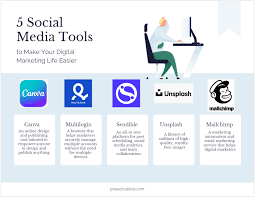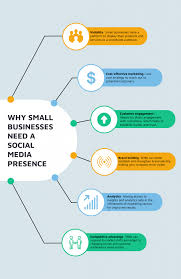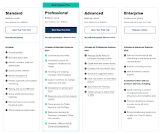Digital and Social Media Marketing: The Future of Advertising
In today’s world, digital and social media marketing have become essential tools for businesses to reach their target audience. With the rise of technology and the internet, traditional advertising methods are no longer enough to capture consumers’ attention. Companies must adapt to the digital age and embrace new marketing strategies to stay competitive.
Digital marketing refers to any advertising that takes place online or through electronic devices such as smartphones, computers, or tablets. This includes search engine optimization (SEO), pay-per-click (PPC) advertising, email marketing, and content marketing. These methods allow businesses to reach a global audience with minimal cost compared to traditional advertising channels such as TV or print ads.
Social media marketing is a subset of digital marketing that focuses on using social media platforms such as Facebook, Twitter, Instagram, LinkedIn, and others to promote products or services. Social media has become an integral part of people’s lives, with billions of users worldwide. This presents an enormous opportunity for businesses to connect with potential customers in a more personal way.
One of the main advantages of digital and social media marketing is the ability to target specific audiences based on demographics, interests, behaviors, and other factors. This allows businesses to create personalized campaigns that resonate with their target audience and increase engagement.
Another advantage is the ability to measure results in real-time. Digital marketing tools provide detailed analytics that allow businesses to track their campaigns’ performance and adjust them accordingly for maximum impact.
However, digital and social media marketing also have some challenges that businesses must overcome. The internet is crowded with content from competitors vying for consumers’ attention. Therefore, creating high-quality content that stands out from the crowd is crucial.
Moreover, social media algorithms are constantly changing, making it challenging for businesses to keep up with trends and best practices. Companies must stay up-to-date with the latest developments in technology and social media platforms if they want their campaigns to be successful.
In conclusion, digital and social media marketing is the future of advertising. With the rise of technology and the internet, businesses must adapt to new marketing strategies to stay competitive. Digital marketing allows companies to reach a global audience with minimal cost, while social media marketing provides a more personal way to connect with potential customers. However, businesses must overcome challenges such as creating high-quality content and keeping up with trends and best practices. By embracing digital and social media marketing, companies can take advantage of new opportunities and achieve their marketing goals.
5 Essential Tips for Effective Digital and Social Media Marketing
- Use a variety of digital and social media platforms to reach your target audience.
- Develop a consistent brand message across all platforms.
- Monitor and respond to customer feedback in a timely manner.
- Utilize data analysis to understand user behavior and adjust your strategies accordingly.
- Leverage influencers, partners, and other stakeholders to expand your reach and engagement levels on social media platforms.
Use a variety of digital and social media platforms to reach your target audience.
When it comes to digital and social media marketing, it’s important to remember that not all of your target audience is going to be in the same place. This is why it’s essential to use a variety of digital and social media platforms to reach your target audience effectively.
Each platform has its own unique features and user demographics, so it’s crucial to understand which ones are most suitable for your business. For example, Instagram and Snapchat are popular among younger audiences, while Facebook tends to attract an older demographic.
By using a variety of platforms, you can increase your chances of reaching a wider audience. This also allows you to tailor your content specifically for each platform, ensuring that your message resonates with your target audience.
However, it’s essential not to spread yourself too thin. It’s better to focus on a few key platforms where your target audience is most active rather than trying to be everywhere at once. This will allow you to create high-quality content that engages with your audience effectively.
In conclusion, using a variety of digital and social media platforms is a crucial tip for effective marketing in today’s world. By understanding where your target audience is most active and tailoring your content accordingly, you can increase engagement and reach a wider audience. Remember not to spread yourself too thin and focus on the platforms where your target audience is most active.
Develop a consistent brand message across all platforms.
Developing a Consistent Brand Message Across All Platforms: A Key to Successful Digital and Social Media Marketing
In today’s digital age, having a strong and consistent brand message across all platforms is essential for businesses to succeed in their marketing efforts. Consumers expect a seamless experience when interacting with a brand, whether it’s on social media, websites, or other digital channels. Therefore, developing a consistent brand message is crucial to building trust and loyalty among customers.
A consistent brand message means that all of your marketing materials, including your website, social media posts, email campaigns, and advertisements, should convey the same message and tone. This includes using the same language, visuals, and branding elements such as logos and colors.
Developing a consistent brand message helps businesses establish a clear identity that customers can recognize and identify with. It also helps companies differentiate themselves from their competitors by highlighting their unique value proposition.
Moreover, consistency in branding builds trust among customers. When consumers see the same message repeated across multiple channels over time, they are more likely to remember it and associate it with your brand. This can lead to increased engagement and conversions over time.
However, developing a consistent brand message requires careful planning and execution. It requires businesses to define their core values and messaging strategy upfront so that all marketing efforts align with these values.
Moreover, consistency in branding requires ongoing monitoring and adjustment as new trends emerge or customer needs change. Companies must stay up-to-date with the latest developments in digital marketing to ensure that their messaging remains relevant.
In conclusion, developing a consistent brand message across all platforms is essential for successful digital and social media marketing. It helps businesses establish a clear identity that customers can recognize and identify with while building trust over time. However, achieving consistency requires careful planning upfront as well as ongoing monitoring and adjustment as needed. By investing in developing a strong brand message across all platforms consistently, companies can increase engagement and conversions while building long-term relationships with their customers.
Monitor and respond to customer feedback in a timely manner.
One of the most important tips for successful digital and social media marketing is to monitor and respond to customer feedback in a timely manner. In today’s world, consumers have more power than ever before, and they can easily share their opinions about products or services with the world through social media.
Businesses that ignore customer feedback or fail to respond promptly risk damaging their reputation and losing customers. On the other hand, companies that actively engage with customers, listen to their concerns, and address their issues can build trust and loyalty.
Monitoring customer feedback involves keeping track of comments, reviews, ratings, and mentions on social media platforms such as Facebook, Twitter, Instagram, LinkedIn, and others. This allows businesses to identify potential problems or opportunities for improvement and take appropriate action.
Responding to customer feedback involves acknowledging their comments or concerns and providing a satisfactory solution. This shows customers that their opinions matter and that the company is committed to providing excellent customer service.
Moreover, responding promptly is crucial. Customers expect a quick response from businesses on social media platforms. Delayed responses can lead to frustration or even negative reviews.
In conclusion, monitoring and responding to customer feedback in a timely manner is essential for successful digital and social media marketing. By actively engaging with customers, businesses can build trust and loyalty while addressing potential problems or opportunities for improvement. Prompt responses show customers that their opinions matter and that the company is committed to providing excellent customer service.
Utilize data analysis to understand user behavior and adjust your strategies accordingly.
Utilizing Data Analysis in Digital and Social Media Marketing
In today’s digital age, data analysis plays a crucial role in understanding user behavior and optimizing marketing strategies. By analyzing user data, businesses can gain valuable insights into their customers’ preferences, behaviors, and needs. This information can help companies create more effective marketing campaigns that resonate with their target audience.
One of the primary benefits of data analysis is the ability to track user engagement with digital and social media content. By monitoring metrics such as clicks, likes, shares, comments, and conversions, businesses can gain a better understanding of what type of content performs best with their audience. This information allows them to adjust their strategies accordingly to optimize engagement and increase conversions.
Data analysis also helps businesses identify trends and patterns in user behavior over time. By tracking changes in customer preferences or behaviors, companies can tailor their marketing efforts to meet evolving needs. For example, if a business notices an increase in mobile traffic to its website, it may want to focus on optimizing its mobile experience or creating mobile-specific campaigns.
Moreover, data analysis allows businesses to measure the effectiveness of their marketing campaigns accurately. By comparing key performance indicators (KPIs) such as click-through rates (CTR), conversion rates (CR), or return on investment (ROI) against benchmarks or industry standards, companies can determine whether their efforts are successful or need improvement.
In conclusion, utilizing data analysis is essential for digital and social media marketing success. By understanding user behavior through metrics tracking and trend analysis, businesses can adjust their strategies accordingly to optimize engagement and increase conversions. Measuring KPIs against benchmarks or industry standards also helps companies determine the effectiveness of their campaigns accurately. Therefore, it is crucial for businesses to invest in data analysis tools and expertise to stay competitive in today’s digital landscape.
Leverage influencers, partners, and other stakeholders to expand your reach and engagement levels on social media platforms.
One of the most effective ways to expand your reach and engagement levels on social media platforms is by leveraging influencers, partners, and other stakeholders. These individuals or organizations have a large following on social media, and their endorsement of your brand can help you reach a wider audience.
Influencer marketing has become a popular trend in recent years, with businesses partnering with social media influencers to promote their products or services. These influencers have built a loyal following on social media platforms such as Instagram, YouTube, and TikTok, and their followers trust their opinions and recommendations.
Partnering with influencers can help you reach new audiences that may not be familiar with your brand. By collaborating with influencers who share your values and target audience, you can increase your brand awareness and drive engagement levels.
In addition to influencers, partnering with other stakeholders such as industry experts or non-profit organizations can also help expand your reach. For example, if you are a sustainable fashion brand, partnering with an environmental organization can help you reach consumers who are passionate about sustainability.
When leveraging influencers, partners, or other stakeholders for your social media marketing campaigns, it is essential to choose individuals or organizations that align with your brand values and messaging. You should also ensure that the partnership is mutually beneficial for both parties involved.
In conclusion, leveraging influencers, partners, and other stakeholders is an effective way to expand your reach and engagement levels on social media platforms. By collaborating with individuals or organizations who share your values and target audience, you can increase brand awareness and drive engagement levels. However, it is crucial to choose partnerships carefully to ensure they align with your brand values and messaging.




